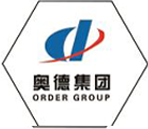
Sep . 19, 2024 06:39
Back to list
natural gas pressure reducing station
Natural Gas Pressure Reducing Stations An Essential Component of Gas Distribution
Natural gas is one of the most widely used forms of energy in the world, serving various applications, from heating homes to fueling power plants. However, the transportation of natural gas from production sites to end-users requires careful management of pressure levels. This is where natural gas pressure reducing stations (PRDs) play a crucial role.
A natural gas pressure reducing station is designed to manage the pressure of natural gas, ensuring that it is safe and suitable for distribution. High-pressure gas from transmission pipelines needs to be reduced to lower, manageable levels before reaching consumers, and this is the primary function of a PRD. These stations are strategically located along gas distribution networks, providing essential safety and efficiency.
The process begins when high-pressure natural gas enters the station through inlet piping. The gas then passes through pressure reduction equipment, which typically incorporates pressure regulators. These regulators automatically adjust the gas pressure by using a combination of mechanical and electronic controls. The goal is to maintain a consistent, low pressure while allowing the necessary flow of gas to meet consumption demands. This not only protects downstream equipment and pipelines but also ensures that consumers receive gas at a safe pressure.
natural gas pressure reducing station

In addition to pressure regulation, PRDs often include various safety mechanisms. These may consist of relief valves, which can vent excess gas in case of pressure spikes, and emergency shutdown valves that can rapidly stop the flow of gas if necessary. These safety features are critical, as they safeguard against potential leaks or explosions, ensuring both operational integrity and public safety.
Moreover, natural gas pressure reducing stations play a vital role in monitoring and controlling the flow of gas. Many modern PRDs are equipped with advanced telemetry systems that provide real-time data about pressure, flow rates, and other operational metrics. This information enables operators to manage the distribution system proactively, optimizing performance and minimizing the risk of outages or pressure-related incidents.
As the demand for natural gas continues to grow, so does the importance of efficient pressure management. Pressure reducing stations not only facilitate safe distribution but also support the integration of renewable energy sources by ensuring that gas remains an essential part of the energy mix. They help balance supply and demand, particularly during peak usage periods, thereby enhancing the overall reliability of the energy supply.
In conclusion, natural gas pressure reducing stations are indispensable in the transportation and distribution of natural gas. By managing pressure levels and ensuring safety, they enable the efficient use of this critical energy resource. As technology advances and the global energy landscape evolves, the role of PRDs will remain vital, helping to shape a sustainable and secure energy future.
Latest news
-
Safety Valve Spring-Loaded Design Overpressure ProtectionNewsJul.25,2025
-
Precision Voltage Regulator AC5 Accuracy Grade PerformanceNewsJul.25,2025
-
Natural Gas Pressure Regulating Skid Industrial Pipeline ApplicationsNewsJul.25,2025
-
Natural Gas Filter Stainless Steel Mesh Element DesignNewsJul.25,2025
-
Gas Pressure Regulator Valve Direct-Acting Spring-Loaded DesignNewsJul.25,2025
-
Decompression Equipment Multi-Stage Heat Exchange System DesignNewsJul.25,2025

